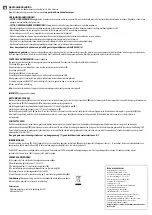
As one of the charging stages, Valen MPPT 30A can not be used alone, but has to be used together
with boost charging, float charging, equalise charging, etc. to complete charging the battery. A
complete charging process includes: fast charging, sustaining charging and float charging. The
charging curve is shown below.
Fast Charging:
at the fast charging stage, as the battery voltage has not reached the set value of full
voltage (i.e. equalising/boost voltage) yet, the controller will perform MPPT charging on the battery
with the maximum solar power. When the battery voltage reaches the pre-set value, constant
voltage charging will begin.
Sustaining Charging:
when the battery voltage reaches the set value of sustaining voltage, the
controller will switch to constant voltage charging. In this process, no MPPT charging will be
performed, and meanwhile the charging current will also gradually decrease. The sustaining charging
stage itself consists of two sub-stages, i.e. equalise charging and boost charging, the two of which
are not carried out in a repeated manner, with the former getting activated once every 30 days.
Boost Charging:
by default, boost charging generally lasts for 2 hours, but users can adjust pre-set
values of duration and boost voltage point according to the actual needs. When the duration
reaches the set value, the system will then switch to float charging.
Equalise Charging:
WARNING! RISK OF EXPLOSION!
In equalise charging, a wetcell battery can
produce explosive gas, therefore the battery chamber should have good ventilation conditions.
NOTE: RISK OF EQUIPMENT DAMAGE!
Equalise charging may raise the battery voltage to a level
that may damage to sensitive DC loads. Ensure that allowable input voltages of all the loads in the
system are greater than the set value for battery equalise charging.
NOTE: RISK OF EQUIPMENT
DAMAGE!
Overcharge or too much gas generated may damage the battery plates and cause active
material on the battery plates to scale off. Equalise charging to an excessively high level or for too
long a period may cause damage. Read the actual requirements of the battery deployed in the
system carefully.


































